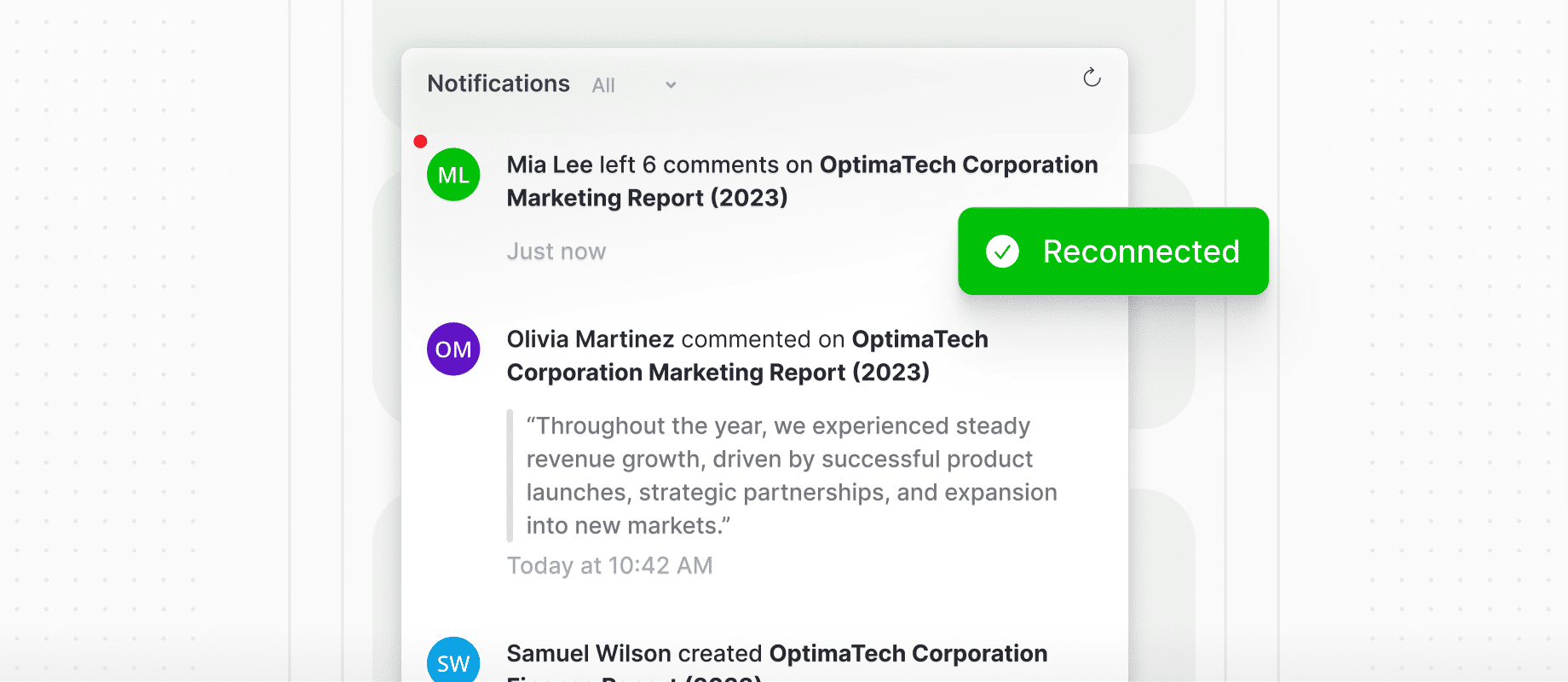You're overseeing your delivery logistics from your dashboard when an alarming notification surfaces - one of your drivers has had a minor accident and they're unable to finish their route.
You start considering your options. Is there a replacement driver close by? Is there a spare vehicle available for the original driver? Just as you're figuring things out, another alert arrives: your driver is okay and the delivery is still on time.
Before you can even process that, another alert contradicts the last: poor road conditions are causing the driver trouble. Confused and frustrated, you shut the dashboard and dial your driver's number.
This experience demonstrates the shortcomings of a realtime update dashboard that fails to maintain data integrity. Although the updates were accurate, they arrived out of order, creating confusion and undermining your user experience.
Previously, we highlighted the essential elements required for a successful realtime update infrastructure. Today, we're focusing on data integrity and its critical role in ensuring an effective realtime user experience.
What do we mean by data integrity?

Data integrity is the measure of the accuracy, completeness, and consistency of data. For realtime update systems, maintaining data integrity is about ensuring data stays intact as it navigates from the backend to the frontend, eventually reaching the user's device.
While data integrity is always crucial, it's not as challenging or critical in contexts that don't require realtime updates. For instance, if LinkedIn sends notifications out of order about job offers or networking requests, the user is unlikely to notice or be significantly impacted.
However, in the realm of realtime systems, data integrity is non-negotiable.
Why is data integrity essential for delivering realtime updates at scale?
To better understand, consider these real-life scenarios:
A financial trader betting on cryptocurrency values needs accurate, realtime price updates. Inaccurate data can lead to substantial financial loss and mistrust in the trading platform.
Similarly, a football fan needs accurate, realtime scores to enjoy the game. Out-of-order updates can lead to frustration and diminish the app's value.
An e-commerce company needs to keep track of its inventory in realtime. Incorrect data can cause them to over-promise and under-deliver, disappointing customers and impacting the company's reputation.
In ride-sharing applications such as Uber or Lyft, realtime updates are crucial for efficient coordination between drivers and riders. Any delay or misorder in these updates can lead to time and fuel wastage for drivers and cause confusion and poor user experience for riders.
This principle holds true for virtually all scenarios involving real-time updates. If a service guarantees realtime experiences, even a single lapse in data integrity could lead users to abandon it. This isn't a case of users being overly critical, but rather, it underlines the fact that a system committed to delivering realtime updates needs to uphold data integrity consistently. If it falls short, it fails to fulfil the promise it made to its users.
As these examples illustrate, even minor issues with data integrity can severely impact the user experience and functionality of realtime systems.
Scaling up these systems becomes even more challenging. A truly world-class realtime update system needs to perform flawlessly on any device, via any network, and in any corner of the world, whether it's a high-speed broadband connection in a Silicon Valley office or a patchy mobile data connection in a remote village.
How to guarantee data integrity for realtime updates at scale
For companies looking to provide realtime updates, a thorough understanding of the cost and effort involved in building such a system is crucial.
A well-designed realtime updates system should:
1. Ensure subscribers receive messages in the order they were published, regardless of their location or network.
2. Deliver messages precisely once, meaning messages are neither lost nor duplicated.
3. Maintain the correct order and content of messages, even in the event of a network disruption.
While achieving data integrity can be a challenge due to a multitude of factors, at Ably, we've tackled these issues head-on. We've developed a robust realtime infrastructure that continuously evolves, offering our clients the advantage of an advanced system without the need to handle these complexities in-house.
To learn more, explore how our data broadcast solution supports realtime updates and how companies like BlueJeans and Metra leverage Ably's infrastructure.
This is the third in a series of four blog posts that look at what it takes to deliver realtime updates to end users. In other posts, we look at why low latency and elasticity are so important when you're trying to deliver realtime updates to end users at scale.



